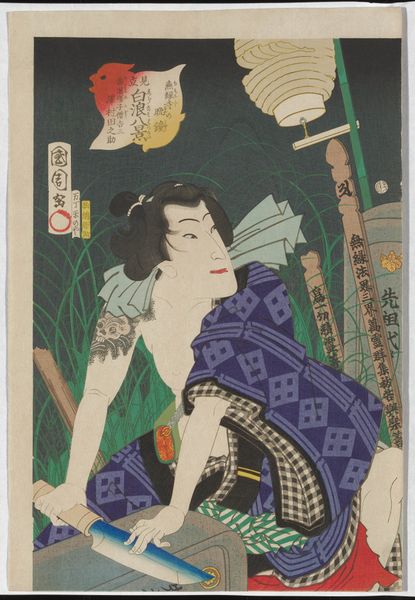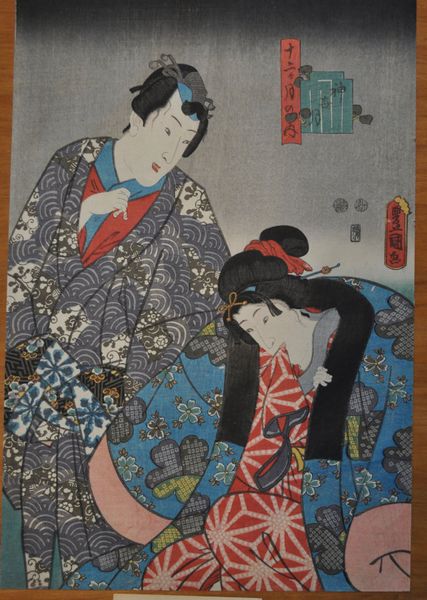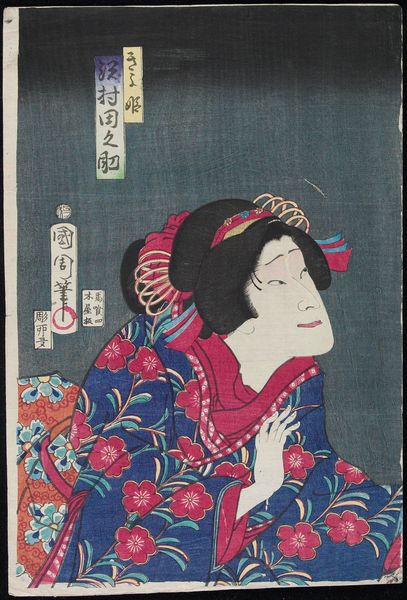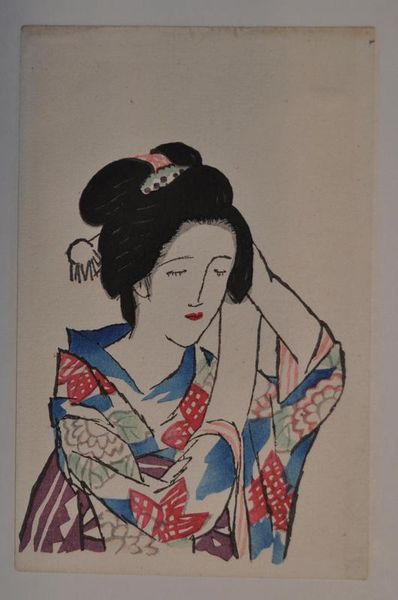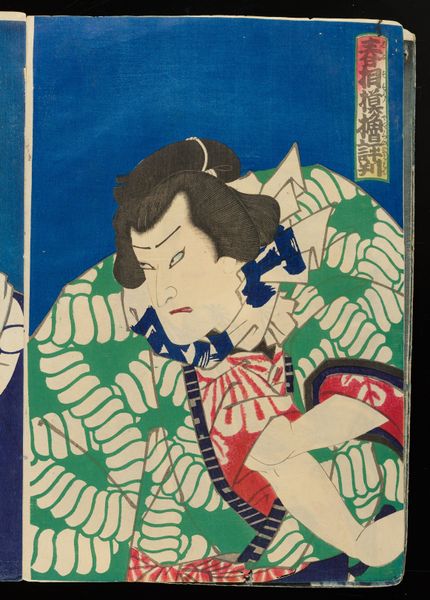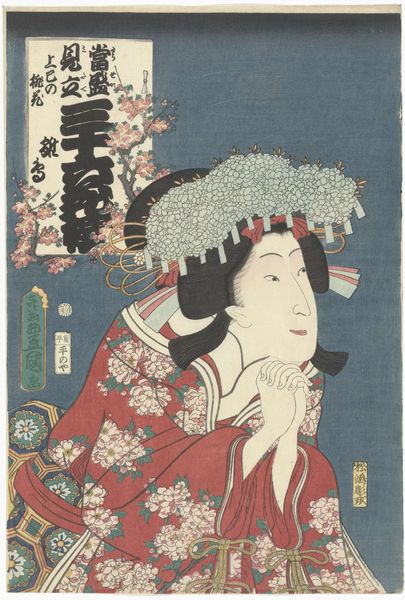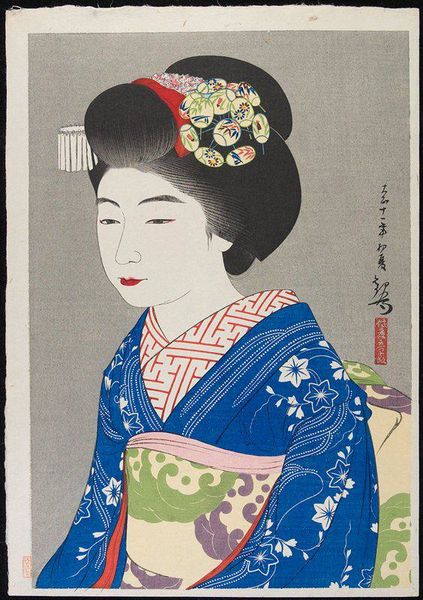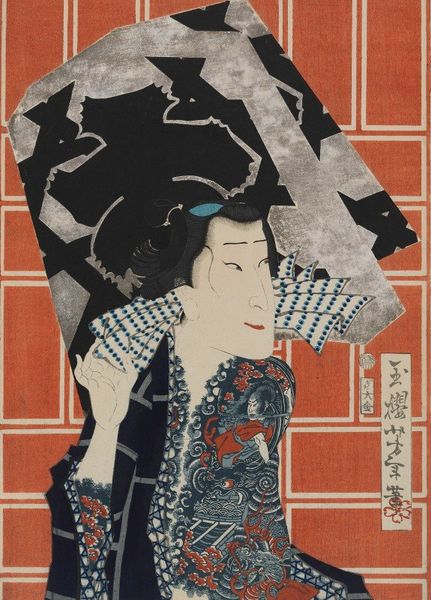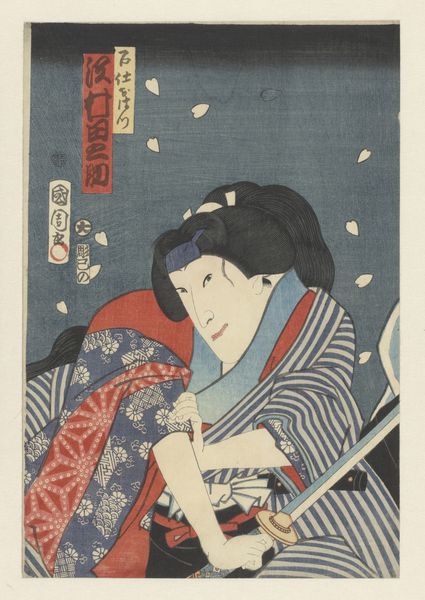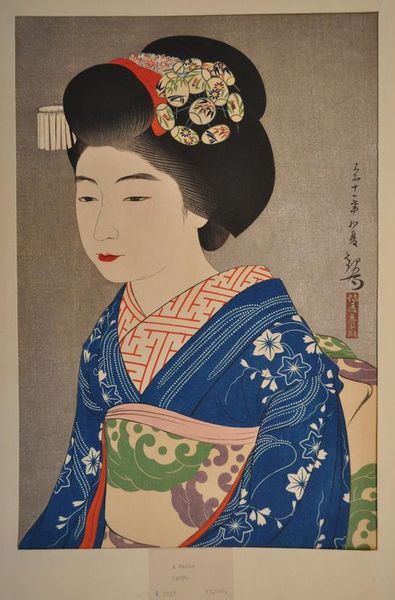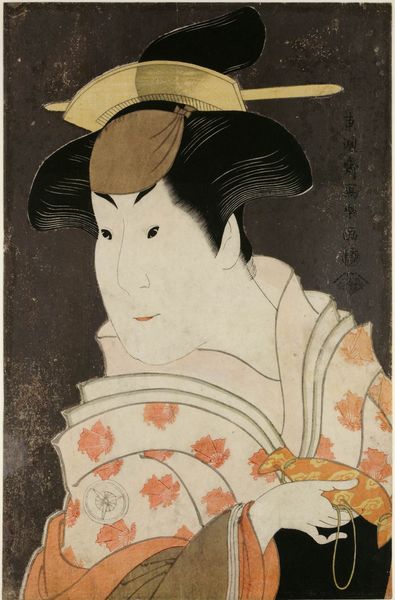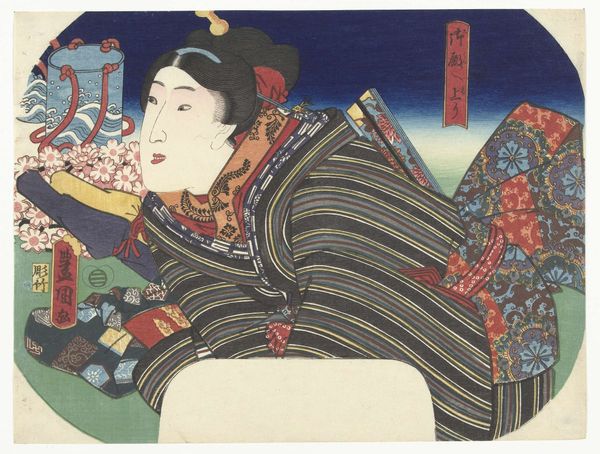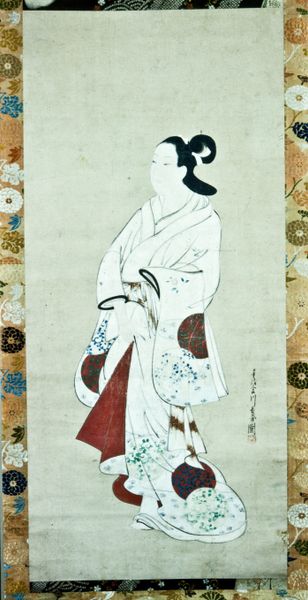
print, ink
#
portrait
# print
#
ukiyo-e
#
japan
#
figuration
#
ink
Dimensions: 14 9/16 × 9 3/4 in. (36.99 × 24.77 cm) (sheet, vertical ōban)
Copyright: Public Domain
Editor: So, this is "Three," a print made with ink, by Toyohara Kunichika around 1865. It’s a portrait with a striking geometric background, very Ukiyo-e. What do you see in this piece? Curator: This work serves as a powerful reminder that even within seemingly traditional forms like Ukiyo-e, complex negotiations of identity and social roles were taking place. This Kabuki actor embodies the tensions between masculinity and performativity inherent within patriarchal structures. How does the actor’s carefully constructed persona challenge or reinforce those structures? Editor: It's interesting to think about that tension! The makeup, the hair... it's such a performance. Almost a defiance? Curator: Precisely! Think about the historical context. What social pressures and expectations were placed upon performers like this Kabuki actor? How might his stylized representation provide a space for both adhering to and subverting those expectations? What can the gaze tell us about the way the audience is supposed to perceive gender and status? Editor: That makes me think about the audience and their role. Is the actor only challenging gender norms or also those of class? Curator: Exactly! The bright colors and the fact that this image circulated in a popular medium like prints suggests a dialogue beyond elite circles. How might this accessibility contribute to broader social discourse, or potentially even dissent? What do the patterns of his robe signify in the grander context of performance and spectatorship? Editor: This has really changed how I see the work. I was just taking it as a historical portrait, but there's a lot more going on when you start looking at the layers of social and gender commentary. Curator: Absolutely. By engaging with art through this lens, we uncover its capacity to reflect and reshape cultural narratives.
